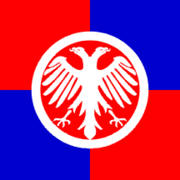Despotovac
| Despotovac Деспотовац | |||
|---|---|---|---|
| Town and municipality | |||
|
Orthodox church in Despotovac | |||
| |||
 Location of the municipality of Despotovac within Serbia | |||
| Coordinates: 44°05′N 21°26′E / 44.083°N 21.433°ECoordinates: 44°05′N 21°26′E / 44.083°N 21.433°E | |||
| Country |
| ||
| Region | Šumadija and Western Serbia | ||
| District | Pomoravlje | ||
| Settlements | 33 | ||
| Government | |||
| • Mayor | Nikola Nikolić (SNS) | ||
| Area[1] | |||
| • Municipality | 623 km2 (241 sq mi) | ||
| Elevation | 189 m (620 ft) | ||
| Population (2011 census)[2] | |||
| • Town | 4,212 | ||
| • Municipality | 22,995 | ||
| Time zone | UTC+1 (CET) | ||
| • Summer (DST) | UTC+2 (CEST) | ||
| Postal code | 35213 | ||
| Area code | +381(0)35 | ||
| Car plates | DE | ||
| Website |
www | ||
Despotovac (Serbian Cyrillic: Деспотовац) is a town and municipality located in the Pomoravlje District of central Serbia. It is 130 kilometers southeast of Belgrade. Its name stems from Despot, a title of Serbian medieval prince Stefan Lazarević. In 2011 the town has a total population of 4,212, while the municipality has a population of 22,995.
History
The Serb Orthodox monastery of Manasija was built between 1406[3]-1418 and is one of the most significant monuments of Serbian culture, belonging to the "Resava school" (Serbian architecture)
In 1406 at the Battle of Despotovac Serbians led by Stefan Lazarević defeated the Ottomans led by Musa Çelebi.
From 1929 to 1941, Despotovac was part of the Morava Banovina of the Kingdom of Yugoslavia.
Demographics
Ethnic groups
The ethnic composition of the municipality:[4]
| Ethnic group | Population |
|---|---|
| Serbs | 21,602 |
| Vlachs | 687 |
| Romani | 244 |
| Romanians | 38 |
| Montenegrins | 21 |
| Macedonians | 21 |
| Muslims | 21 |
| Croats | 20 |
| Albanians | 18 |
| Yugoslavs | 16 |
| Bulgarians | 14 |
| Others | 489 |
| Total | 23,191 |
Settlements
Aside from the town of Despotovac, the municipality includes the following settlements:
- Balajnac
- Beljajka
- Bogava
- Brestovo
- Bukovac
- Despotovac (town)
- Despotovac
- Dvorište
- Grabovica
- Grčko Polje
- Jasenovo
- Jelovac
- Jezero
- Lipovica
- Lomnica
- Medveđa
- Miliva
- Panjevac
- Plažane
- Popovnjak
- Ravna Reka (mining town)
- Resavica (town)
- Resavica (village, also known as Dutovo)
- Senjski Rudnik (mining town)
- Sladaja
- Stenjevac
- Strmosten
- Trućevac
- Veliki Popović
- Vitance
- Vodna (mining settlement)
- Zlatovo
- Židilje
Notable sites

- Manasija monastery
- Resava Cave (Serbian: Resavska Pećina)
- Veliki buk waterfall in Lisine, in upper Resava valley.
See also
References
- ↑ "Municipalities of Serbia, 2006". Statistical Office of Serbia. Retrieved 2010-11-28.
- ↑ "2011 Census of Population, Households and Dwellings in the Republic of Serbia: Comparative Overview of the Number of Population in 1948, 1953, 1961, 1971, 1981, 1991, 2002 and 2011, Data by settlements" (PDF). Statistical Office of Republic Of Serbia, Belgrade. 2014. ISBN 978-86-6161-109-4. Retrieved 2014-06-27.
- ↑ https://kb.osu.edu/dspace/handle/1811/41013
- ↑ "ETHNICITY Data by municipalities and cities" (PDF). stat.gov.rs. Statistical Office of the Republic of Serbia. Retrieved 20 February 2018.
External links
| Wikimedia Commons has media related to Despotovac. |

.png)


